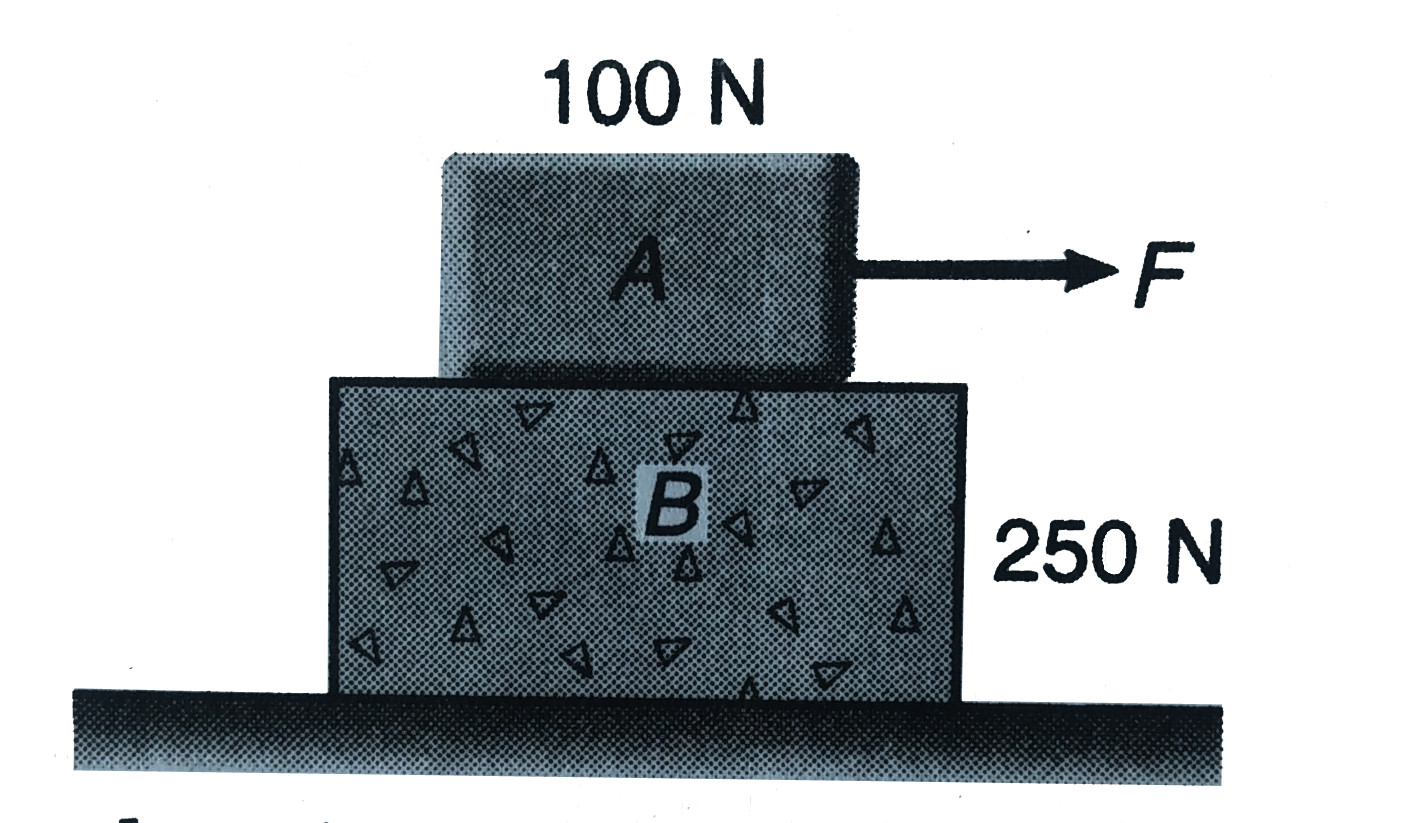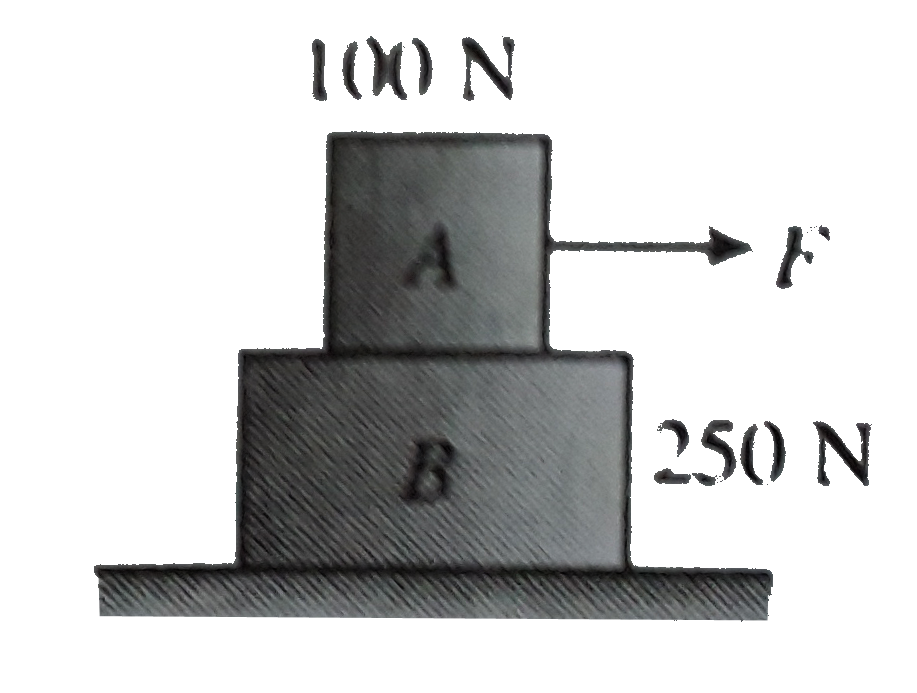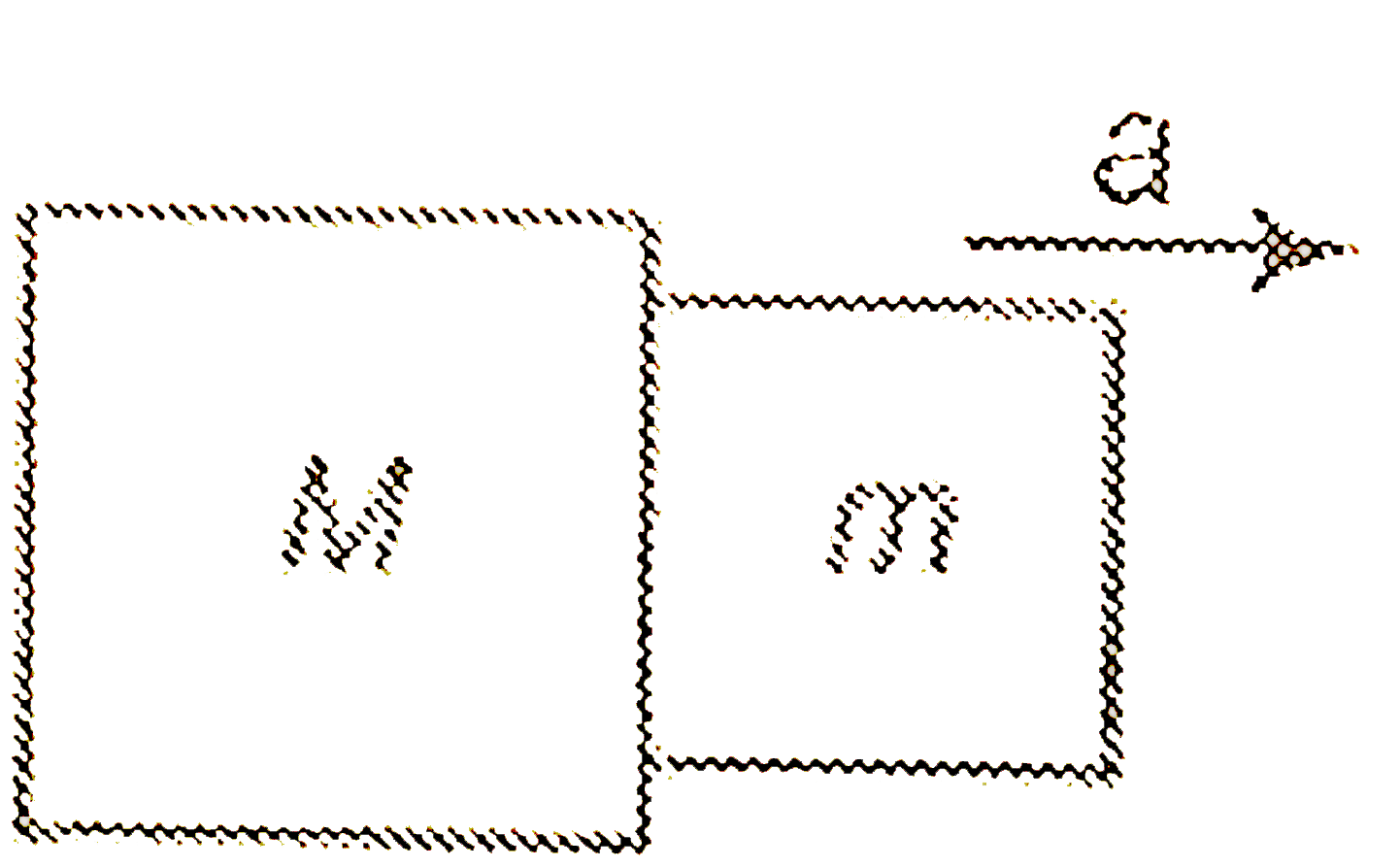Block B rests on a smooth surface .The coefficient of static friction between A and B is μ=0.4 where F=30N then
Acceleration of lower block is

3/7ms−2
4/3ms−2
6/7ms−2
3/2ms−2
The correct Answer is:c
For upper block
amax=mg=4ms−2 and fmax=40N
a. when F=30N,as F<fmax
so both blocks will move togather
∴A=FM+m=3015=67ms−2
b. when F=250N
For upper block: 250−40=10a1
210=10a1⇒a1=21ms−2
For block
a2=4025=85ms−2
Topper's Solved these Questions
- BOOK - CENGAGE PHYSICSCHAPTER - NEWTON'S LAWS OF MOTION 2EXERCISE - Linked Comprehension52videos
NEWTON'S LAWS OF MOTION 2
- BOOK - CENGAGE PHYSICSCHAPTER - NEWTON'S LAWS OF MOTION 2EXERCISE - Integer6videos
NEWTON'S LAWS OF MOTION 2
- BOOK - CENGAGE PHYSICSCHAPTER - NEWTON'S LAWS OF MOTION 2EXERCISE - Single Correct87videos
NEWTON'S LAWS OF MOTION 2
- BOOK - CENGAGE PHYSICSCHAPTER - NEWTON'S LAWS OF MOTION 1EXERCISE - Integer5videos
NEWTON'S LAWS OF MOTION 1
- BOOK - CENGAGE PHYSICSCHAPTER - PROPERTIES OF SOLIDS AND FLUIDSEXERCISE - INTEGER_TYPE2videos
PROPERTIES OF SOLIDS AND FLUIDS
Similar Questions
Block B rests on surface . If the coefficient of static friction between A and B is μ=0.4. Determine the acceleration of each , if
(a) F=30N and
(b) F=250N(g=10m/s2)
 View Solution
View SolutionA block of mass 1 kg lies on a horizontal surface in a truck. The coefficient of static friction between the block and the surface is 0.6. If the acceleration of the truck is 5m/s2, the frictional force acting on the block is…………newtons.
View Solution
Knowledge Check
- Question 1 - Select One
Block B rests on a smooth surface .The coefficient of static friction between A and B is μ=0.4 where F=30N then

Acceleration of upper block isA3/2ms−2B6/7ms−2C4/3ms−2D3/7ms−2 - Question 2 - Select One
The coefficient of static friction between the two blocks is 0.363. What is the acceleration of block 1 so that block 2 does not fall ?
 A6ms−2B12ms−2C18ms−2D27ms−2
A6ms−2B12ms−2C18ms−2D27ms−2 - Question 3 - Select One

In the figure shown, a block of weight 10 N resting on a horizontal surface. The coefficent of static friction between the block and the surface μs=0.4 . A force of 3.5 N will keep the block in uniform motion, once it has been set in motion. A horizontal force force of 3N is applid to the block, then the block willAMove over the surface with constant velocityBMove having accelerated motion over the surfaceCNot moveDFirst it will move with a constant velocity for some time and then will have accelerated motion
A block weighing 20 N rests on a horizontal surface. The: coefficient of static friction between block and surface is 0.40 and the coefficient of kinetic friction is 0.20.
( a) How large is the friction force exerted on the block?
(b) How great will the friction force be if a horizontal force of 5 N is exerted on the block?
(c) What is the minimum force that will start the block in motion?
(d) What is the minimum force that will keep the block in motion once it has been started?
(e) If the horizontal force is 10 N, what is the friction force?View SolutionA block of mass 5 kg is (i) pushed in case (A) and (ii) pulled in case (B), by a force F = 20 N, making an angle of 30∘ with the horizontal, as shown in the figures. The coefficient of friction between the block and floor is μ=0.2 . The difference between the accelerations of the block, in case (B) and case (A) will be: (g=10ms−2)
 View Solution
View SolutionA block of 5 kg is resting on a horizontal surface. The coefficient of kinetic friction between the block and the surface is 0.2. What is the acceleration with which the block will remove if a force of 9.8 N is applied to it ?
View SolutionConsider the situation as shown in the diagram.
The coefficient of friction between the block is 0.5. The acceleration of the lower block isView SolutionA force F accelerates a block of mass m on horizontal surface. The coefficient of friction between the contact surface is . The acceleration of m will be -
View Solution

